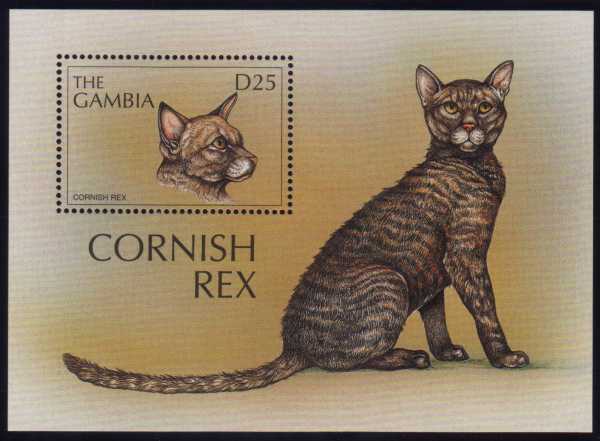Gambia
1997


Cornish Rex cats originated in Cornwall, England, where they first appeared in a litter of barn cats born about 1950. Rex comes from Castorrex, the Latin name for beaver. Rex mutations occur with fair frequency in mammals, and the first of these -- with a wavy undercoat and no or modified guard-hairs -- was dubbed Castorrex because its brown color was similar to the color of a beaver. The name has evolved to apply to the coat quality and not the coat color.
The Cornish Rex Cat is hardy and long lived, but strictly an indoor pet, since its coat has only half the thickness of a regular catís coat, offering little protection from extreme cold or heat. Its metabolism is higher, giving it a much bigger appetite. If its coat is brushed too vigorously, bald patches may appear. Its body has been compared to a Whippet dog's because of its arched back, barrel chest, small waist and very long, fine legs. In spite of its dainty appearance, however, this cat is extremely hard-bodied and muscular, using its well developed hips and long legs for fast starts and stops, quick turns and high jumps.
In personality, the Cornish Rex is extremely affectionate and people oriented. It is an active cat whose kitten-like antics last a lifetime, and it can be very inventive in its play. Favorite Cornish Rex games are fetch, catch and even "discus," in which the cat uses its hand-like paw to pick up and toss a small object. In spite of its sophisticated, elegant appearance, the Cornish Rex cat is anything but cool, aloof or dignified.
| Previous Page | Home | Next Page |